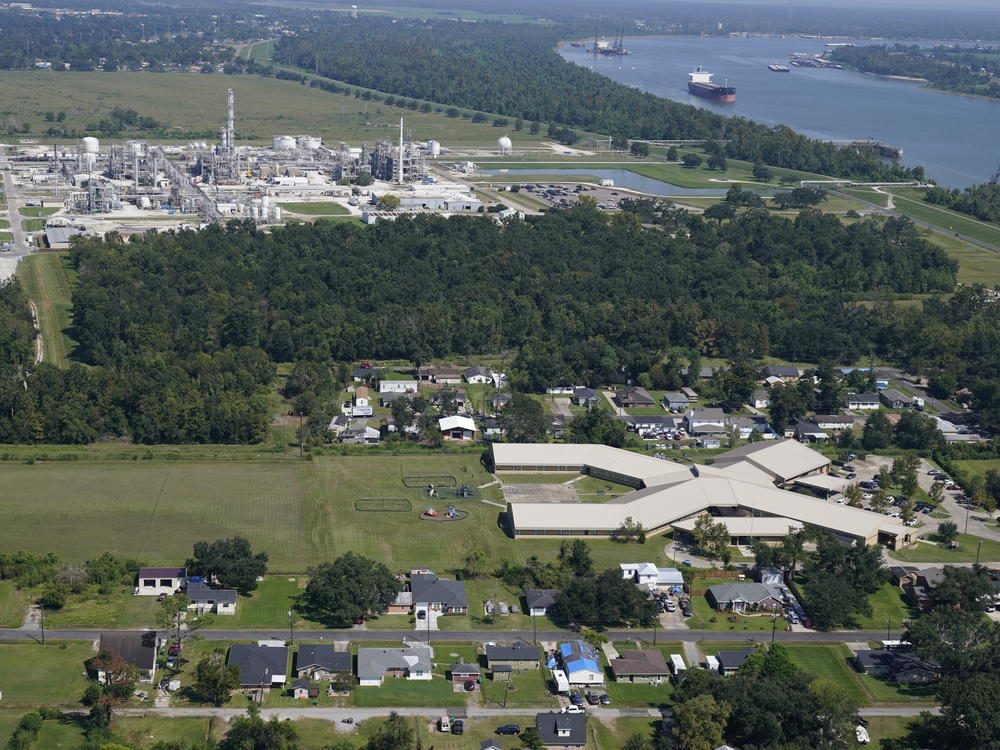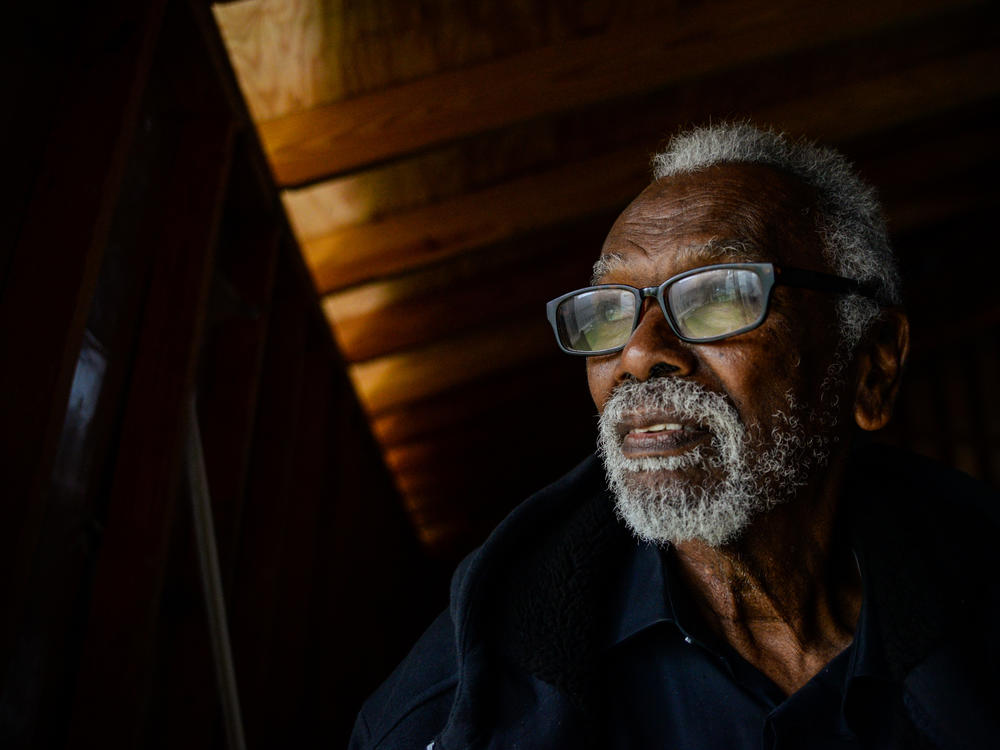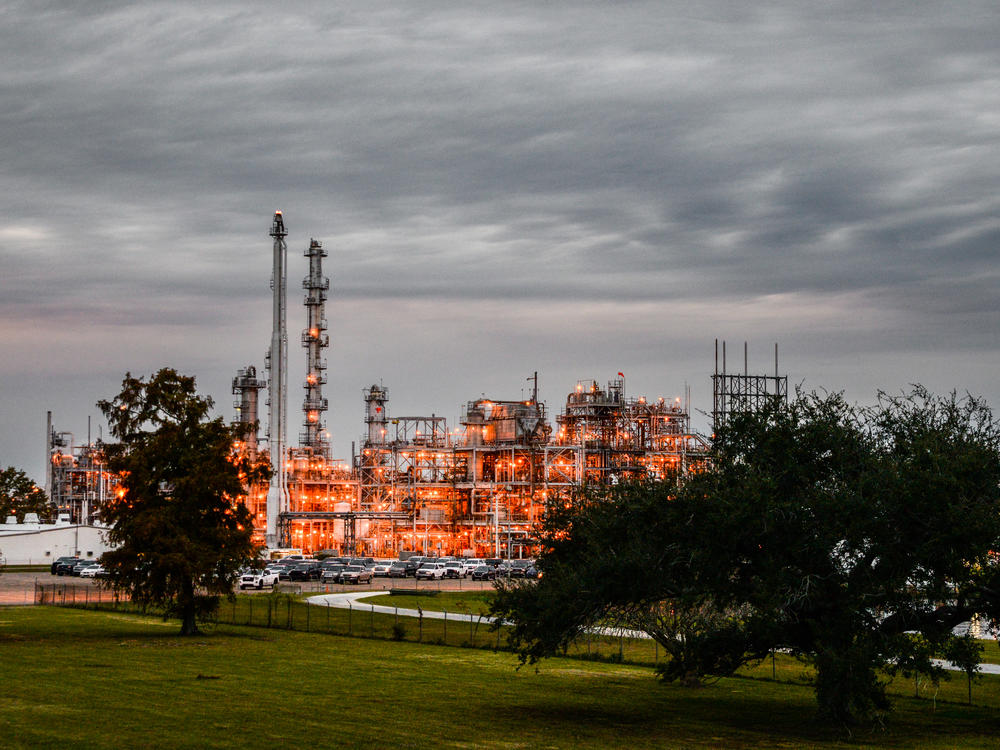Section Branding
Header Content
For communities near chemical plants, EPA's new air pollution rule spells relief
Primary Content
The Environmental Protection Agency announced a major rule on Tuesday to reduce toxic air pollution coming from more than 200 chemical plants across the U.S. The move comes as part of the Biden administration's pledge to better protect communities overburdened by pollution. The new standards for petrochemical plants, once implemented, will cut enough cancer-causing emissions to reduce cancer risk by 96% for people living near these industries, according to the EPA.
"This is a game changer any way you look at it," said EPA Administrator Michael Regan at a press event Tuesday. "This is a game changer for the health. It's a game changer for the prosperity. It's a game changer for children in these communities nationwide."
The new rule affects dozens of chemicals, and it's the first time the national emissions standards for hazardous organic pollutants have been amended in 30 years.
Ethylene oxide and chloroprene are the two main pollutants targeted by the rule. They're mostly produced by chemical plants disproportionately located near minority communities in Texas and Louisiana. Even in small amounts, exposure to both chemicals can damage human DNA and cause mutations that can lead to illnesses later in life. Children are especially susceptible.
The EPA will require industries to find the source of pollution for these chemicals and make repairs if annual air concentrations of pollutants exceed standards. The plants will also be required to add fence-line monitoring near communities and share the data publicly.
The strict standards come more than two years after Regan visited communities as part of his Journey for Justice tour. He visited communities throughout the Gulf Coast including Texas and Louisiana.
Regan visited St. John the Baptist Parish during his tour. It's in the heart of Louisiana's Cancer Alley — the nickname for the state's 85-mile industrial corridor located along the Mississippi River — and home to the country's only chloroprene producer, Denka Performance Elastomer. That chemical is used to make neoprene, a synthetic rubber used in things like beer koozies and wetsuits.
The Denka plant is located next to a predominantly Black elementary school where hundreds of students attend. Robert Taylor, who also lives near the plant, has pushed to close it for nearly a decade.
"We couldn't believe the statement that they were being exposed at over 400 times what EPA has set as a safe level of exposure at that time," Taylor said.
The EPA's new rule, he said, is the first time serious action has been taken to lower his community's risk. Since Regan's tour, the EPA has also sued Denka, alleging the plant's emissions present an "imminent and substantial endangerment" to the health of Taylor's community. The case has yet to go to trial.
Other community activists also applauded the EPA's decision to put stricter standards in place for toxic pollutants. Sharon Lavigne founded the Louisiana-based environmental group Rise St. James in the neighboring parish. Like Taylor, Lavigne said concerns about pollution encroaching on Black communities have gone largely unanswered by public officials at all levels before Regan.
"In St. James Parish, there is a 10-mile radius where a dozen petrochemical facilities operate near the homes of Black residents," Lavigne said. "This is environmental racism."
She said the new monitoring will be key for her community — something they've requested for years.
"When the action levels are exceeded, we want immediate notification in our community as well as the opportunity for us to have input on the steps taken to ensure compliance and reduce air pollution," Lavigne said.
According to an analysis by the Environmental Defense Fund, more than 80% of the industrial plants affected by the new rule were non-compliant with existing laws at some point in the last three years.
The rule also comes as the EPA's legal authority to pursue environmental civil rights violations is threatened by a lawsuit launched by now-Louisiana Gov. Jeff Landry after the agency launched a now-defunct investigation into the Cancer Alley.
Ethylene oxide producers will have two years to comply with the new rule which includes extensive upgrades to equipment to avoid emissions, like fixing vents and installing new technology to capture and destroy the pollution before it escapes.
Denka, on the other hand, will have 90 days to comply, with an opportunity for an extension. Jason Hutt, a law partner at Bracewell, represents Denka. He said the company – along with other chemical manufacturers – plans to challenge the EPA's rule.
"It would be really nice if we could get back to the science and not the politics of the situation," Hutt said, "because there's a lot of people's livelihoods and jobs that are at stake in this outcome."
The EPA's rule, Hutt said, would shutter the Denka plant because the company won't be able to comply with the standards fast enough. That translates, he said, to more than 100 local jobs lost, as well as tax revenue. Denka has also been in a long battle with the EPA, disputing the health impact of chloroprene, arguing the agency is regulating based on "faulty science."
Meanwhile, environmental groups, community activists, and long-time environmental justice leaders are celebrating what they consider a historic move to right past environmental injustices.
"(Regan's) shown a way forward for changing Cancer Alley. Administrator Michael Regan embodies the phrase, 'promises made, promises kept,'" said Deep South Center for Environmental Justice founder Beverly Wright, who also spoke during Tuesday's EPA announcement.




